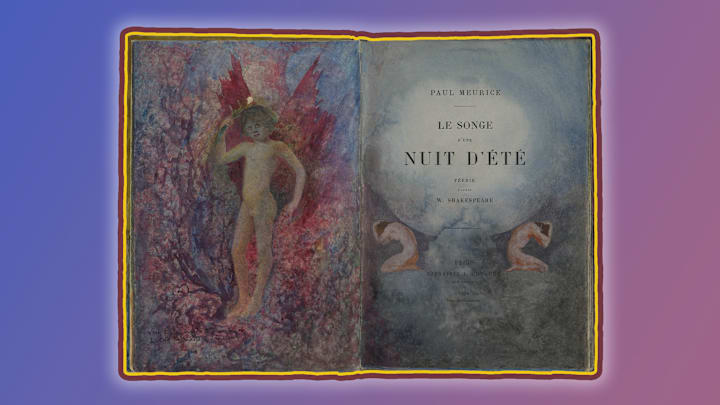Annotating your books is a proven way to increase engagement with a text and better comprehend it. But not all annotations are made up of words—and that’s the fundamental premise of a bibliophile craze that lasted from the late 18th century to the Great Depression.
What is extra-illustrating?
Extra-illustrating is the practice of annotating books with pictures rather than sentences or bullets. It can be done to any book in theory, but the genre is usually nonfiction, building out the book’s visual examples. So if a book mentions George Washington, for instance, you could find a printed portrait of George Washington and attach it to the original entry. This is what differentiates it from the similar process of scrapbooking; the material is entirely dictated by the base text being extra-illustrated.
Another term for the practice is Grangerization, which stems from one of the most notorious examples of extra-illustrating. A Biographical History of England, from Egbert the Great to the Revolution by James Granger was published in 1769. Over four volumes, the book detailed many of England’s most significant individuals throughout the years.

Granger’s friend, Richard Bull, was a devoted book collector and very much made his copy of the tome his own: He expanded it into 35 massive volumes and created a mixed-media visual and textual masterpiece aptly called “the Bull Granger.”
The practice probably seems blasphemous to those of us who even balk at the idea of doodling in margins or dog-earing pages. It had vocal critics at its peak, with one scathing 1892 comment calling it “breaking up a good book to illustrate a worse one.”
Still, extra-illustrating thrived, and those who enjoyed it enjoyed it thoroughly. And while the Bull Granger was a particularly large project, it wasn’t uncommon for what was once a single volume work to grow into a newly-rebound series of a dozen volumes.
You May Also Like ...
- How to Keep a Commonplace Book: The Renaissance-Era Practice That’s Making a Comeback
- Why Medieval Artists Doodled Killer Bunnies in Their Manuscript Margins
- 13 Tips From a Rare Books Expert to Keep Your Books Looking Great
Add Mental Floss as a preferred news source!
The Benefits of Extra-Illustrating
Extra-illustrating isn’t just about aesthetics. In many ways, it was the pre-Internet version of falling down a Wikipedia rabbit hole. In the constant search for new prints, the extra-illustrator often finds themselves learning about new topics related to—but not included in—the original text. And of course, there’s the inherent satisfaction of the pursuit.

Those same qualities are what make it such a compelling activity for the modern age. For one, it encourages people to engage with, and ultimately be led by, their inherent curiosity.
It also asks readers to deny the instant gratification of the Internet age. You could just print that portrait of George Washington—and that would be a completely valid way to extra-illustrate. But you could slow things down even further, perusing the offerings of a local used bookshop for books about the Revolutionary War and perhaps scoring a coveted addition more organically. You could even try your hand at painting within the pages, as some extra-illustrators of the past have done.
Because in the end, the extra-illustrated book is a document of the intellectual journey—a physical manifestation of where the rabbit hole has taken you.
